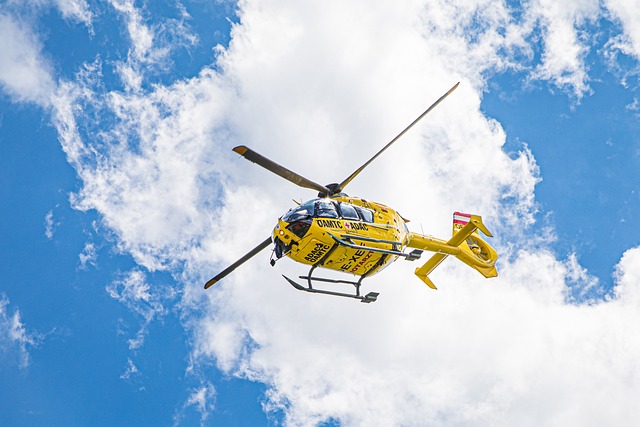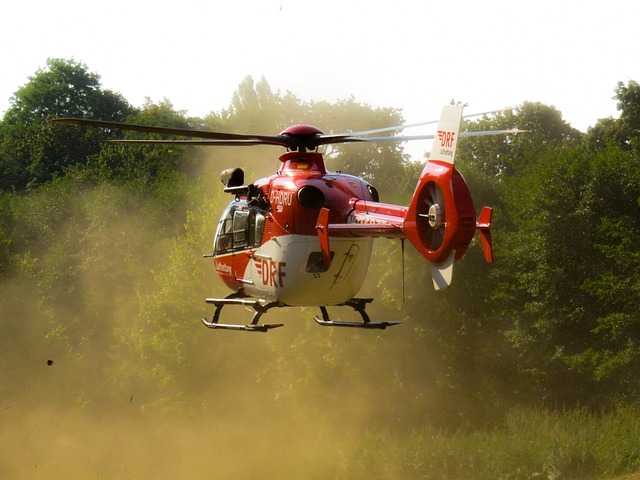Flashlights for emergency preparedness are essential tools during power outages, ensuring safety and enabling individuals to navigate dark environments without relying on the power grid. Selecting a reliable flashlight with considerations for battery life, durability, beam intensity, and user-friendliness is crucial for effective emergency response. A comprehensive home emergency kit should include at least one high-quality flashlight with spare batteries. Flashlights must be constructed with durable materials, offer multiple lighting modes, including high and low beams and SOS functions, and utilize reliable battery technology like lithium-ion or alkaline, with the latter being suitable for long-term storage in cool, dry conditions. Regular testing of flashlights and their batteries ensures readiness for emergencies. Strategic placement of flashlights throughout the home enhances visibility and supports the overall emergency preparedness strategy. In the face of severe storms or extended outages due to natural disasters or infrastructure failures, flashlights remain a vital resource for performing essential tasks and maintaining safety and functionality. Flashlights for emergency preparedness are a critical component of any household's readiness plan for unexpected power interruptions.
In the event of a power outage, reliable lighting becomes a lifeline, ensuring safety and continuity of daily activities. This article illuminates the critical role of flashlights in emergency preparedness, emphasizing their indispensable nature during unexpected blackouts. We’ll explore key features to seek in an emergency flashlight, compare handheld versus headlamp models, and delve into battery considerations for sustained use and long-term storage. Additionally, we’ll outline effective strategies for incorporating these light sources into your home’s emergency kit, and recount real-life scenarios where flashlights have proven their worth in maintaining clarity and security during power outages. Flashlights For Emergency Preparedness is a guide to empower you with the knowledge to choose wisely and stay prepared.
- Understanding the Importance of Reliable Light Sources During Power Outages
- The Role of Flashlights in Emergency Preparedness Planning
- Key Features to Look for in a High-Quality Emergency Flashlight
- Types of Emergency Flashlights: Handheld vs. Headlamps
- Battery Considerations for Flashlights in Long-Term Storage and Use
- Strategies for Integrating Flashlights into Your Home's Emergency Kit
- Real-Life Scenarios: How Flashlights Have Proven Essential During Power Outages
Understanding the Importance of Reliable Light Sources During Power Outages

When the grid falters and the lights flicker out, reliable light sources become indispensable. Understanding the importance of dependable illumination during power outages is crucial for maintaining safety, continuity of essential activities, and peace of mind in unexpected dark situations. Flashlights for emergency preparedness are not merely a precautionary measure but an integral part of a well-considered disaster response plan. They offer immediate and portable lighting, allowing individuals to navigate their surroundings without the reliance on potentially compromised power infrastructure. In the event of a power outage, a flashlight can illuminate pathways, facilitate critical tasks, and provide comfort during prolonged periods of darkness. The choice of a reliable flashlight for emergency preparedness should be based on factors such as battery life, durability, beam intensity, and ease of use. By integrating high-quality flashlights into your home emergency kit, you ensure that you are prepared for the unexpected, transforming potential chaos into manageable situations with the simple but powerful presence of reliable light.
The Role of Flashlights in Emergency Preparedness Planning

In the event of a power outage, reliable light sources become indispensable for maintaining safety and functionality. Flashlights for emergency preparedness are critical tools in any home or workplace inventory. They serve as a primary means to navigate through dark environments, ensuring that individuals can move safely around their homes or workplaces without stumbling over objects or risking injury. These portable lighting devices are designed to operate independently of the electrical grid, providing illumination when and where it’s needed most. A well-stocked emergency kit should always include a high-quality flashlight, along with fresh batteries, as they are among the simplest yet most effective tools for enhancing safety during unexpected power interruptions. Moreover, flashlights for emergency preparedness come in various sizes, styles, and light outputs to suit different needs; from compact models that fit into a pocket or bag to more robust versions capable of lighting up larger areas. It’s advisable to test these flashlights regularly to guarantee they are functioning when suddenly needed, and to keep them in accessible locations for immediate use during emergencies. Incorporating flashlights into your emergency preparedness plan is not just a precaution; it’s a proactive step towards ensuring safety and stability in the face of power disruptions.
Key Features to Look for in a High-Quality Emergency Flashlight

When selecting a high-quality emergency flashlight for preparedness, durability and reliability are paramount. A robust build ensures that the flashlight can withstand harsh conditions and frequent use. Look for flashlights designed with aircraft-grade aluminum or high-impact plastic, as these materials can endure drops, bumps, and environmental factors without failing. Additionally, a high-quality emergency flashlight should offer multiple lighting modes to suit various situations—high beam for long-distance visibility, low beam for extended use without draining the battery quickly, and possibly an SOS or strobe function for signaling in distress.
Battery performance is another critical feature. Flashlights for emergency preparedness must have a reliable power source, often in the form of rechargeable lithium-ion batteries or long-lasting alkaline batteries. Consider models with battery levels indicators to avoid unexpected power outages during an emergency. Furthermore, look for flashlights with LED technology, as it provides superior brightness and longevity compared to traditional bulbs. Lastly, water resistance is a must; an IP (Ingress Protection) rating of IP65 or higher ensures that the flashlight can be used in wet conditions without risking electrical failure. With these features in mind, the right emergency flashlight will serve as a dependable tool for ensuring safety and visibility when the power goes out.
Types of Emergency Flashlights: Handheld vs. Headlamps

When power outages strike, reliable lighting becomes an essential tool for maintaining safety and functionality in homes and workplaces. In the realm of emergency preparedness, flashlights for emergencies are a critical component. They come in two primary forms: handheld flashlights and headlamps. Each has its advantages, making them suitable for different scenarios and user preferences.
Handheld flashlights offer a traditional form of lighting, providing users with a familiar tactile experience. Their portability allows for easy transportation and storage, making them a staple in many emergency kits. The beam direction is under the user’s control, which is advantageous when illuminating specific areas or when hands-free operation is not required. Handheld flashlights often boast a range of light intensities and settings, including strobe or SOS modes that can be useful for signaling in distress situations.
In contrast, headlamps represent an innovative approach to lighting during power outages. They are particularly beneficial when both hands need to be free for tasks such as navigating in the dark, working on repairs, or moving through difficult terrain. Headlamps come with adjustable brightness settings and beam patterns, ensuring users can direct light exactly where it’s needed. Their ergonomic design ensures comfort over extended periods, which is crucial during prolonged power outages. Additionally, headlamps often feature a wider field of view compared to handheld flashlights, which can be advantageous in situations that require a broader illumination range. Both types of emergency flashlights are vital for preparedness, with their selection depending on the user’s specific needs and the context of the power outage scenario they aim to prepare for.
Battery Considerations for Flashlights in Long-Term Storage and Use

When selecting flashlights for emergency preparedness, it’s crucial to consider the battery type and capacity, as well as the potential for long-term storage. High-quality alkaline or lithium primary batteries generally have a shelf life of around 10 years when stored in cool, dry conditions, making them reliable options for emergency flashlights. However, rechargeable batteries such as NiMH or lithium-ion may have a shorter lifespan on the shelf due to their charge-retention characteristics over time. To ensure optimal performance during a power outage, it’s advisable to run a test on your flashlight before storing it for an extended period. This not only checks the functionality of the light but also allows you to replace any batteries that may be weak or depleted. It’s also important to store batteries at full charge if they are rechargeable, and to avoid extreme temperatures, as these can shorten battery life. For those who anticipate long-term power outages, investing in flashlights with interchangeable battery packs can provide added flexibility and longevity. Regularly replacing the batteries every few years, even if the flashlight is not in use, will help maintain readiness for when it’s needed most. Additionally, having a selection of flashlights with different beam intensities and ranges ensures that you are prepared for various emergencies, from sudden blackouts to prolonged power outages.
Strategies for Integrating Flashlights into Your Home's Emergency Kit

In the event of a power outage, reliable lighting becomes an indispensable tool for maintaining safety and functionality within your home. Flashlights for emergency preparedness are a critical component in any comprehensive home emergency kit. To effectively integrate flashlights into your home’s emergency plan, it is advisable to have at least one flashlight per household member, ensuring they are easily accessible during an emergency. Opt for high-quality models with durable construction and long-lasting batteries or rechargeable options with versatile lighting modes. Additionally, consider storing them in conspicuous yet safe locations, such as on shelves or countertops, where they can be quickly retrieved. It’s also beneficial to periodically test your flashlights to confirm their functionality and replace batteries as necessary. By strategically placing flashlights in key areas of your home, you can create a makeshift lighting network that directs visibility towards critical spaces like hallways, staircases, and the immediate vicinity of exits and important appliances. This proactive approach to emergency lighting not only enhances safety but also provides peace of mind during unexpected power disruptions. Remember to tailor your flashlight selection to suit the unique needs of your household, considering factors such as the size of your home and the specific demands of its occupants.
Real-Life Scenarios: How Flashlights Have Proven Essential During Power Outages

flashlights have consistently demonstrated their indispensability in various real-life scenarios, particularly during power outages. In the event of a sudden loss of electricity, flashlights for emergency preparedness become a lifeline, enabling individuals to navigate their homes safely, avoid potential hazards, and maintain critical functions until power is restored. A prime example is the aftermath of severe storms where lightning and high winds can lead to widespread outages. In such situations, households relying on flashlights avert complete darkness, allowing residents to check on neighbors, secure properties, or seek shelter without stumbling in the dark. These instances underscore the reliability of flashlights as a cornerstone of personal safety and preparedness. Moreover, during extended power interruptions caused by natural disasters or infrastructure failures, flashlights ensure that emergency procedures can be carried out effectively, whether it’s for critical medical equipment, ensuring food preservation, or simply maintaining communication in the absence of digital devices. The consistency with which flashlights have proven essential underscores their importance in any comprehensive emergency preparedness plan.
In conclusion, reliable light sources, particularly flashlights for emergency preparedness, are indispensable tools during power outages. They not only illuminate our path in the dark but also play a critical role in ensuring safety and facilitating essential activities until power is restored. When selecting a flashlight, consider its durability, brightness, battery life, and ease of use. Both handheld and headlamp styles have their advantages, with the latter freeing up your hands for other tasks. Proper battery management is key to maintaining readiness. By integrating a high-quality emergency flashlight into your home’s preparedness kit, you can be confident in your ability to navigate unexpected power disruptions effectively. The real-life scenarios highlighted in this article underscore the practicality and necessity of having reliable flashlights for emergency preparedness on hand. Staying informed and prepared with these essential tools can significantly reduce stress and enhance safety during any prolonged power outage.
